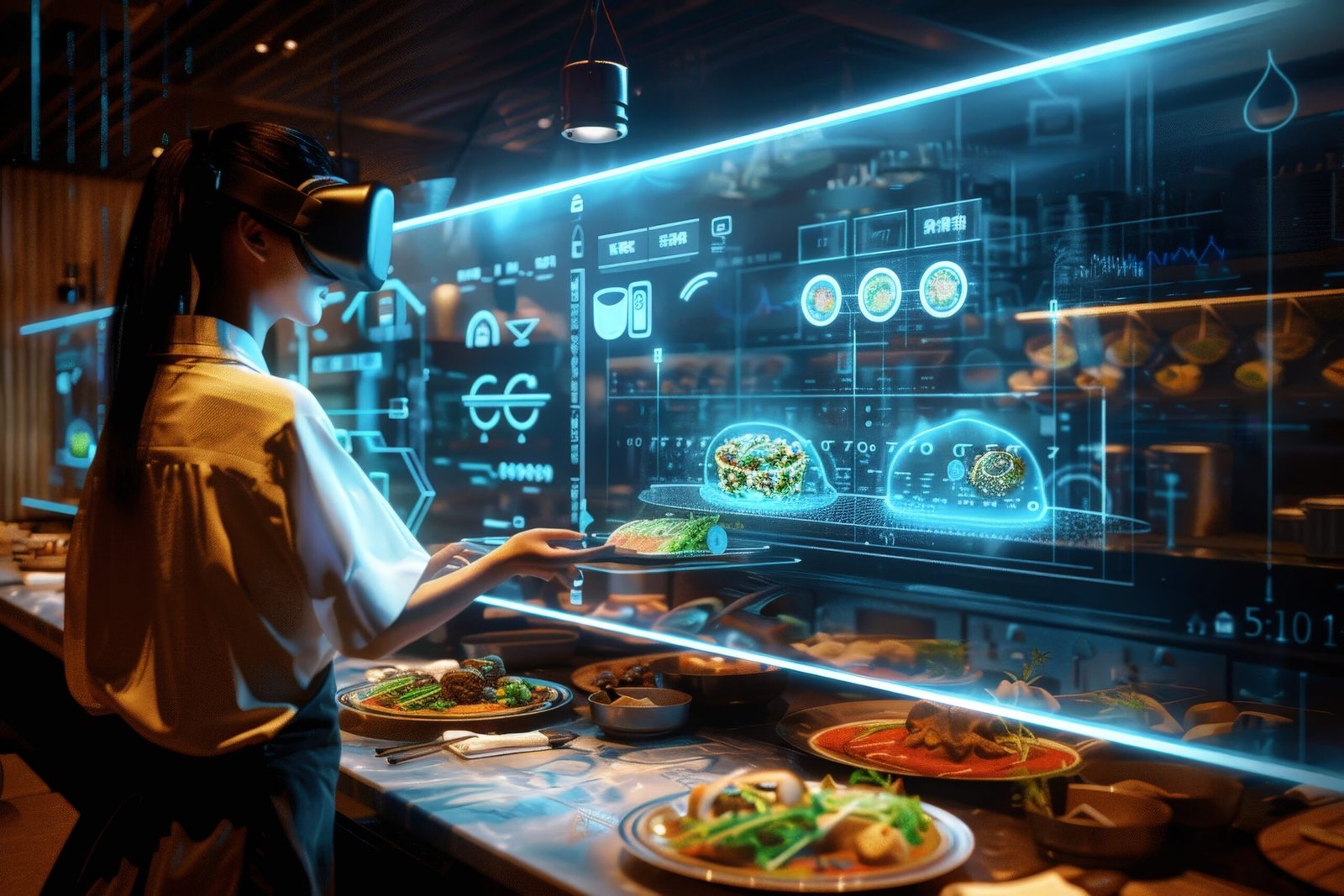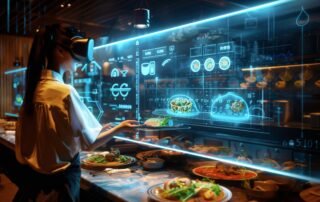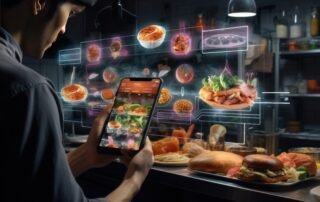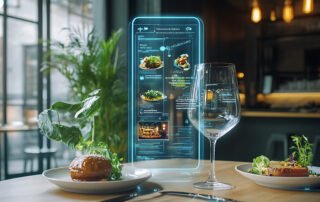The restaurant industry is undergoing a profound transformation driven by the integration of digital technologies. Augmented reality-based restaurant menus stand out as a revolutionary force, redefining the dining experience. The journey from traditional, static paper menus to dynamic, interactive interfaces marks a significant evolution that delivers abundant informational and engaging features. This shift goes beyond digitising menus—creating immersive, personalised, and more effective dining experiences.
The digital overlay on the physical world has opened up many new avenues for customer interactions, operational efficiency, and brand separation. While restaurants are working toward improving customer satisfaction and service efficiency, AR in the hospitality industry boasts its importance as a new and significant tool and represents one of the turning points.
Augmented Reality for Interactive Dining Experiences
AR for interactive dining experiences is a cornerstone of this technological shift. 3D food visualisation with AR allows customers to explore dishes in a way that traditional menus cannot replicate. With 3D images, diners can view the food from all angles. This gives them a clearer idea of portion size, ingredients, and presentation and is helpful for complex or unfamiliar dishes.
Furthermore, augmented reality for menu customisation provides detailed information about ingredients, allergens, and nutritional content. This transparency is akin to the growing need for more personal eating experiences. Diners may thus make informed choices according to their specific dietary needs and preferences. Further, an interactive (holographic) AR menu has allowed one to inform diners about the unique ingredients, way of cooking, and artistry behind each dish. This can add to the overall dining experience.
Contactless and Smart Menus
The advent of AR for a contactless dining experience has become increasingly significant in the post-pandemic landscape. Smart menus with AR technology offer a hygienic and efficient alternative to traditional menus, reducing physical contact and enhancing safety. The AR ordering systems ease the dining process, allowing customers to browse, select, and customise orders with their smartphones and tablets. It not only means efficiency but also lessens errors and waiting time. These digital menus contribute to customer engagement with interactive content, including videos, animations, and real-time updates. The experience level is further enhanced by an AI-based digital assistant embodied in a culinary art expert avatar.
Custom-designed and shaped according to the restaurant’s brand, it interacts with customers, answering in-depth questions about their menu, providing ingredient information, and offering personalised recommendations based on customers’ taste preferences and/or what’s available in the kitchen. This interactive support enhances the dining experience, making it more enjoyable and engaging.
Marketing and Branding with AR
Restaurants are increasingly using AR for marketing and branding, to create unique and memorable dining experiences. The development of AR and VR technologies in fine dining establishments contributes to building experiential settings where customers are engaged and loyal to the brand.
Restaurants use AR-driven promotions to increase foot traffic and social media engagement. These places use AR to bring games alive and virtual tours and themed experiences that relate to their brand identity.
Such tactics attract attention and create an emotional tie to the brand. AR is also being explored as a tool to communicate food’s cultural and historical context. Sharing AR content can boost marketing efforts and expand audience reach.
Challenges and Future Prospects
Despite the immense potential of AR menu technology in restaurants, challenges remain. One of the biggest hurdles to implementation is the high cost and the challenge of wide-scale consumer adoption. Essential hardware and software must be installed in restaurants, and consumers must be willing to adopt new technologies. Seamless integration with the restaurant’s existing systems is essential. Additionally, data privacy remains a critical concern.
Future AR in the food industry will likely enter another stage and evolve into more advanced applications such as personalised dining recommendations based on AI-driven taste profiles and augmented virtual culinary experiences. This evolution will further integrate augmented reality for food ordering into the daily dining experience. Therefore, the more efficient development of user-friendly AR interfaces is also essential to mass acceptance, while combining with technologies like IoT and AI will open new avenues for personalised and immersive dining.
Conclusion
Augmented reality restaurant menus are revolutionising the hospitality industry, offering interactive, informative, and contactless dining experiences. The application of augmented reality technology in food service enhances customer engagement, improves day-to-day operations, and fosters creativity.
As technology develops and is widely adopted, AR will be a key driver for personalised, engaging, and efficient restaurant dining in the future. It enhances customer engagement by visualising dishes, presenting detailed information, and conversing with digital assistants. AR allows restaurants to create memorable dining experiences that distinguish them from competitors. With the technology’s maturity, we expect to see even more interesting applications enhancing dining experiences and redefining the future of the restaurant industry.
Reimagine Dining with AR – Powered by P-XR AG
Transform your restaurant experience with immersive AR menus, 3D dish visuals, and smart, contactless ordering. Enhance engagement, streamline service, and stand out from the crowd. For consultations, contact P-XR AG at contact@p-xr.ch — let’s craft the future of dining together!




